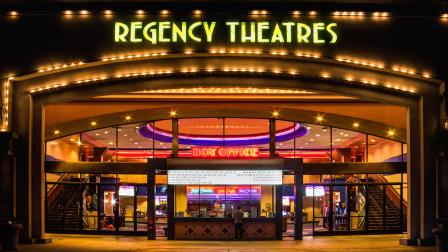Videology joins Screenvision to make movie theater ads more targeted
The alliance offers a new layer of audience data and allows advertisers to buy online, TV and movie theater inventory via one platform.
A couple of Saturday nights ago, several of my family members and I went to see the movie “Indignation” at a local theater. It was the first time I’d been out to a movie in several months.
Since the film had gotten good reviews, we got there a bit early to make sure we got good seats and went into the theater as soon as the doors opened. Then, for about 45 minutes, we sat and watched commercial after commercial, followed by trailer after trailer. I nearly forgot that we came to watch a movie.
Perhaps with better targeting, movie theaters will be more restrained about the number of commercials they show to their captive audiences — who have paid $12, $15 or more per ticket for the privilege.
As with the effort to counter ad-blocking, a more efficient targeting of theater ads — and the resulting increased relevancy to specific audiences — might lower the need to spray so many.
Better targeting for movie theater commercials is the idea behind the recent announcement by TV/video software provider Videology that it has formed an alliance with cinema advertising provider Screenvision Media to add new layers of targeting data for theater ads.
The companies say this is the first time that movie theater advertisers will be able to add data about online and offline household interest, plus transactional data, onto the limited info currently used to target cinema ads. As a result, Videology says, advertisers will be able to buy and implement cinema ad campaigns, along with TV and online video campaigns, from Videology’s single platform.
This new capability, Videology founder and CEO Scott Ferber said in a statement, “means that marketers can run campaigns by applying a common strategy across four screens: cinema, TV, mobile and desktop.”
Currently, a cinema ad provider like the New York City-based Screenvision schedules its movie theater ad campaigns based on such relatively broad-brush data as age, gender, geography, income and ethnicity.
‘A converged place’
These are gleaned from the ZIP codes in which a theater resides or from the ZIP codes represented in typical audiences for a specific kind of film in a given theater, from the credit cards used to buy tickets, by inferences about audience ages derived from the kind of movie shown and other methods. Screenvision services more than 14,000 movie screens in 2,300 theaters across the US with its high-resolution video ads.
Onto this basic layer of audience data, Videology now adds such data as purchases at neighborhood retailers, interests as determined by websites visited in specific ZIP codes, cars purchased in the relevant ZIP codes, and so on.
The purchases might come from a purveyor of offline data, while the web surfing activity might come from a data provider that correlates cookie- or mobile ID-based web surfing with geographical locations, based on GPS, IP address correlation, cross-device matching or other ways to line up ZIP codes with online behavior. Videology says it has more than 40 data partners.
Videology SVP Aleck Schleider described via email a typical use case:
“… [a] brand or agency would come to us requesting an in-cinema campaign plan that reaches a defined audience. That audience could be very specific and based on their first-party customer data, or could be more broad such as ‘Luxury Automotive Buyers.’ We would then use our software and data partnerships to build a prescriptive plan that identifies the geographic composition of that target audience and generates an optimal forecast for reaching them most efficiently.”
“So, where in the past an advertiser could deliver their campaign to males age 35–49, now they can deliver ads to males 35–49 that are in the market to buy a new vehicle. The buying of the ads is also simplified by adding the cinema inventory into the same programmatic workflow used for buying other media … We’re offering a converged place to buy all video advertising …” [including TV and online, as well as movie theaters.]
Similar, but different
The service — expected to launch later this year — is a managed one, and Videology said it is working on turning it into self-service. The ads are delivered to the theater by Screenvision, sometimes on a day’s notice but usually on a five-day turnaround from when the purchase is made.
Schleider pointed out that, while this new alliance offers movie theater targeting more granular than what has existed, it’s nowhere near the 1:1 targeting available in online ads, since the lowest data unit is the household. And, of course, the ads are shown to an entire theater audience, when only some might be interested in a new car.
But, he said, this otherwise makes cinema advertising “very similar” to online advertising in its targeting, forecasting, reporting and measurement, even if not in delivery or granularity.
This new alliance is the latest effort by Screenvision to turn movie theaters into vehicles for digitally tracking and measuring audiences.
In January, for instance, it unveiled an alliance with beacon network Mobiquity to install and manage iBeacons throughout 300 multiplexes in the US, creating the largest movie theater-based mobile ad network to that point.
Marketing Land – Internet Marketing News, Strategies & Tips
(19)















